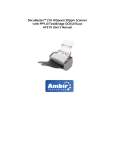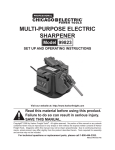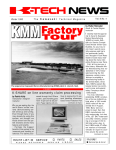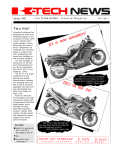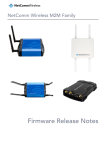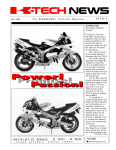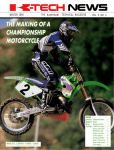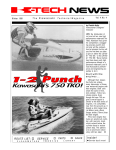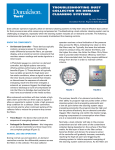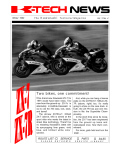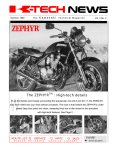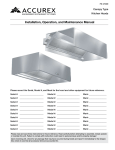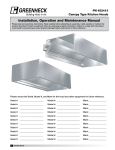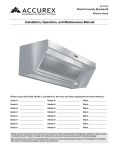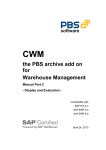Download K-Tech News Vol.5 No.2
Transcript
Summer 1992 The Kawasaki Technical Magazine Vol. 5 No. 2 ZR1100 by Patrick Kelly Instructional Designer/ Instructor Maybe you caught a glimpse of this fine machine at the dealer meeting in San Antonio last year, or maybe you read a little about it in the March issue of Cycle World. But nowhere did you get an answer to this question, “When do we get it?” Well, you need not wait any longer because the ZR1100 is here! CONTlNUED ON PAGE 2 KX125 & 250 by Ray St. John Supervisor, Technical Writing T he changes to the ’93 KX125-J2 and KX250-J2 might seem pretty subtle until you get a look at them. We’re talking about more power throughout the rev range, better handling and braking, and more durability! After all, the ’92 models were real winners and you don’t want to mess too much with that kind of success! CONTINUED ON PAGE 4 ROUTE LIST: o SERVICE P L E A S E R E T U R NT O o PARTS S E R V I C E o SALES L I B R A R Y Inside! n Service tips & more! ZR1100 CONTINUED FROM PAGE 1 The biggest ZR joins its 750cc brother in ’93 to complete the ZR line-up. The ZR1100 brings back the days of the big and powerful “standard” motorcycle. Like those big standards of yesteryear, the newest ZR is big, powerful and comfortable. And, like those bikes, it is also very versatile-equally at home commuting to work every day or playing on your favorite canyon road on the weekends. But that is where the similarities end, because The ZR1100’s air-cooled four is all-new, but there’s no mistaking its heritage. ZR1100 video available! everything those bikes did, the ZR1100 does even better. T he introductory video on the new ZR1100 is now The engine ... available. If you belong to the Tech Training Video Club, you will be receiving your copy soon. This 16-minute tape covers the ZR1100’s most interesting features, from its all-new engine to its distinctive “retro-bike” styling. The tape is aimed at the trained technician, but is general enough to play for interested customers as a sales tool. Order “Introduction to the ZR1100” by calling Kawasaki’s Service Training and Communications Department at (714) 770-0400, ext. 2472. We’ll put your copy in the mail and bill you just $35.95, plus shipping, handling and applicable sales taxes, if any. If you’d like to get this tape for 30 percent off, call the number listed and join our Tech Training Video Club. There’s no membership fee and no dues; just savings on every video tape we offer. You’ll receive up to four new videos a year at the reduced price of $25.00. Some are even less! (We’ll only send videos covering your product mix. You won’t get anything you can’t use.) - Ray St. John 2 l K-Tech News Let’s explore the features of the ZR1100 engine, all new but with a layout that is very similar to the proven ZG1200 engine. It’s an air-cooled, inline, four-cylinder displacing 1062cc’s from a bore of 73.5mm and a stroke of 62.6mm. Peak horsepower, 93ps, is reached at a low 8000 rpm. Peak torque, 65 ft/lbs, is reached at just 7000 rpm. This modern air-cooled engine features special ducts to direct extra cooling air to the number two and three cylinders. A cen- tral cam chain drives the dual overhead camshafts which open one 39mm intake valve and one 34mm exhaust valve per cylinder. The valve train is the familiar and ultra-reliable shim-under-bucket design. In fact, the buckets and shims are the same as those used in virtually every shim-under-bucket air-cooled engine we’ve ever made including the KZ550, KZ650, KZ750 and the GPz1100. The combustion chambers, a semi-spherical design for maximum thermal efficiency, combine with flattopped pistons to provide a 9.1:1 compression ratio. Because this engine is air cooled and has such a large bore, two spark plugs per cylinder are used. Using two plugs reduces the distance the flame front must travel, thus minimizing any tendency to detonate. A side effect of using two plugs is that the ignition timing needs much less advance, with just 2.5° before top dead center at 1000 rpm. The ignition timing is controlled by a sophisticated digital ignition with automatic load sensing (see sidebar next page). The ZR1100 engine uses a forged one-piece crankshaft which rides in five plain main bearings. The crankshaft drives the clutch directly through the primary drive gear located on the left crankweb of number four cylinder. The primary drive gear also drives a single counterbalancer at twice crankshaft speed to help smooth out the engine’s vibes. The drivetrain ... The hydraulically actuated clutch features a back-torque limiter to reduce tire slippage under severe engine braking. The basic construction is similar to the one used on the ZX7. Nine driving plates utilizing a paperbased friction compound and radial oil grooves combine with eight knurled steel plates to transfer the 1100’s massive torque smoothly without deformation from heat. In addition, the clutch basket is drilled to reduce the adhesion of oil to the steel plates when the engine is cold. The drilled clutch basket, the paper-based friction plates with radial oil grooves, and the knurled steel plates help the transmission to slip into gear smoothly when the engine is cold. The ZR1100’s wide power band means that the transmission needs only five speeds. Second through fifth gears have specially finished gear teeth for reduced mechanical losses and less gear noise. The dogs of third through fifth are also undercut slightly for positive gear shifts. Final drive to the rear wheel is through a No. 530 X-ring chain, similar to the chain used on the ZX11 and ZX7. The K-ring chain seals dirt out and lubrication in better than an O-ring chain, for superior durability. The lubrication system features the largest oil cooler ever fitted to a Kawasaki, with a capacity of 5400 Kcal/hr (50 percent larger than the one on the ZX11). Like many of our other four-cylinder engines-those found in the ZX7 and ZX6 to name two-the ZR1100 engine features two oil pumps. One oil pump supplies oil to the vital engine parts while the other supplies the oil cooler. The oil filter is the internal type, and is the familiar P/N 16099003 used on many other Kawasaki models. The frame ... The ZR1100 frame is a conventional one-piece double-cradle design constructed of high tensile steel thin-wall tubing. ä Electronic wizardry: Dual plugs, dual coils, digital igniter and a load sensor. Keeping up with demand: Firing the ZR1100 The ZR1100 has a new approach to lighting the fire in its massive combustion chambers. To ensure the flame front rages across the 75mm diameter combustion chamber without detonation, two spark plugs per cylinder are installed. Dual plugs ignite a pair of flame fronts which speed up combustion for rapid starts, with less chance of detonation and lower emissions. One plug from each cylinder pair is fired by one of four dual-output ignition coils. The plug wire arrangement is similar to other four-cylinder Kawasakis; there are just twice as many wires. From the igniter to the spark plugs there are two complete and separate ignition systems for each cylinder, making the system even more reliable and easy to troubleshoot. The digital igniter has a single, rightside-mounted pulse coil and four separate triggering transistors for each of the four ignition coils, improving reliability. A key feature of the ZR1100’s ignition is the load sensor. As you know, twisting the throttle open when a bike is under load translates into decreased vacuum at the intake manifold and increased possibility of detonation. Limiting that possibility in this system is a vacuum-transducer, located under the tank. Signaled by the transducer, the igniter selects a different spark-advance data map for the load then selects the optimum spark timing for the current engine rpm. Five data maps are stored in the igniter to provide the perfect profile of spark timing to match the rider’s demand for power. - Jerry Heil The Technical Magazine 3 l KX125 & 250 CONTINUED FROM PAGE 1 The engine: 125 The power increase in the KX125 is traceable to a number of changes. Increased port and reed valve area help pump up mid-range and top-end power. An aluminum cover on the crank web increases crankcase compression for better lowand mid-range torque as well as improved throttle response. The cylinder head is changed to increase squish area. This increases turbulence in the combustion chamber to help control detonation under severe conditions. The piston crown is machined smooth to help with this also. The compression height of the piston is reduced 0.2mm by the machining but the compression ratios are unchanged—9.1:1 at low ZR1100 CONTINUED FROM PAGE 3 As a convenient servicing feature, the right downtube unbolts for easy engine access. The ZR1100 chassis has a rake of 27° and trail of 110mm combined with a relatively short wheelbase of 59 inches. This gives the ZR1100 nimble handling characteristics well suited to moderate sport riding as well as easy handling around town. The engine mounts to the frame at six points: there are two front rubber mounts and four rear solid mounts. Topping off the stout frame is an excellent sus4 l K-Tech News speeds and 8.1:1 at high speeds. The cylinder’s main exhaust and scavenging ports are redesigned and the KIPS sub-exhaust ports, main valve and passages are wider. The for the lower half of the rev range. The primary choke height has been increased to 7.45mm from 6.35mm last year, and it now has a slit in it for improved atomization. The well around the primary KIPS now cuts in at 8,800 rpm—up 400 rpm from last year-to complement the other engine changes. The expansion chamber is also new, along with a new ignition timing curve to help all the other changes work together. The flywheel effect of the rotating parts is decreased for quicker acceleration. Detail changes inside the carburetor are good choke is larger in diameter: 5.0mm, up from 3.6mm. Finally, the pilot outlet is closer to the main outlet by 9.3mm to smooth the transition from pilot to main system. The piston skirt fits the cylinder wall a little closer to cut mechanical noise, and the cylinder extends down into the crankcase 5mm farther to reduce piston slap. The stronger con- pension package. The front suspension consists of conventional forks with an inner tube diameter of 43mm. The fork springs are buffed smooth on their outer surface to reduce the amount of break-in required. In addition, the fork bushings and pistons are chamfered to assure smooth action at the beginning of the suspension stroke. The rear suspension features piggyback style reservoir shocks, similar to the ones on the ZR750 and ZR550. These shocks feature four-way compression and rebound damping, as well as fiveway spring pre-load adjustment. The rear suspen- sion package is completed by a massive aluminum swingarm with eccentric chain adjusters. And more ... This outstanding chassis is completed by excellent brakes. The front brakes are four-piston calipers gripping huge 310mm front discs. These excellent brakes are very similar to the ones used to haul the ZX11 down from speed. The rear brake is a two-piston caliper which employs pistons of different sizes on the same side of the caliper to grip a 240mm disc. Together these brakes give state-ofthe-art braking power. Ad- necting rod introduced last year is installed from the beginning of ’93 production. The clutch is reinforced with more ribs to extend its service life. The engine: 250 The big news on the ’93 KX250 is the new guillotine-type KIPS valve in the J2 model’s top end. The new valve is very similar to the one in the KX125, and allows the main exhaust port to be a lot wider at the top. The new valve also controls the port much more accurately and fits the piston better for less gas leakage in the low speed position. Result? Much more top end and more low-end and mid-range power, too! The inlet and Boyesen ports are larger this year, and in combination with increased crankcase compression, this pumps up the lower half of the power band considerably. ditional items which make the biggest ZR more competent and convenient? A comfortable yet sporty upright riding position, fuel gauge, lockable helmet hooks, retractable luggage strap hooks, four-way adjustable brake and clutch levers, passenger grab rail, and a centerstand. The ZR also features a maintenance-free battery, natural rubber grips and large rubber-mounted handlebar end-weights to dampen vibrations. The ZR1100 has stepped development of the standard motorcycle up to a new level. Standards are back and better than ever! o The expansion chamber is designed to enhance the mid-range, and the silencer has been lightened; the end plates are now 0.8mm thick instead of 1.0mm, and the baffle pipes are 1.0mm wall thickness, down from 1.2mm. The piston no longer has the NCC coating on the skirt. Vertical ribs in the intake port have eliminated the need for this special, expensive coating by stopping the piston from rocking in the bore. As on the 125, the top of the piston is machined smooth to cut down carbon deposits and detonation. The machining lowers the piston’s compression height by 0.2mm. The combustion chamber shape has more squish area to increase turbulence and detonation resistance. Both the high and low speed compression ratios drop slightly, the low speed ratio to 10.2:1 and the high speed ratio to 8.7:1. Quicker throttle response on the ’93 KX250 comes from reduced flywheel effect. The weights of both the flywheel and the crankshaft are reduced. The ignition timing curve is reprogrammed with more top end advance, to take advantage of the drop in high speed compression ratio. The KX250’s carburetor specs are similar to those on the new KX125. A new main nozzle has a higher primary choke (7.45mm, up from 6.35mm), with a slit in it for better atomization. The well around the main nozzle increases from 3.6mm in diameter to 5.0mm. The pilot outlet is ’93 KX125 and 250 detail close-ups (CLOCKWISE FROM TOP LEFT): Larger diameter front axle is lighter and stronger; new floating disc has six rivets; flush rear axle is clean and light; carb refinements improve low-end power delivery. only 12.5mm from the main nozzle to smooth the transition from pilot to main system. The intake reeds are still carbon fiber type, but the material is changed for increased durability. The chassis ... The frame shared by both of these bikes is all new. To reduce frame weight, wall thickness is down on the headpipe (2.3mm to 1.8mm) and the rear center frame bracket (2.0mm to 1.6mm). The swingarm wall thickness is reduced and the rear axle bracket is now an aluminum extrusion instead of a casting. The front axle’s outer diameter is up 3mm to 20mm, allowing the wall thickness to be reduced along with the weight, without loss of rigidity. The front forks push rods are now aluminum instead of steel for even more weight reduction. Spring wire diameters are smaller on both ends though the spring rates are the same. The UniTrak rods are slimmer and the number of rivets in the full-floating discs is down from eight to six to, again, save weight. Additional weight reduction comes from a thinnerwall fuel tank and a narrow front fender. A small weight saving is realized from the thinner fork outer tubes, but the real advantage here is from balanced rigidity between the inner and outer tubes. Matching the rigidity of the tubes will cut down on tube damage in hard landings at race speeds and allow better fork action under these super-stressful conditions. An elongated oil-lock piece starts the hydraulic cushioning effect sooner on the compression stroke to soften those front-first landings. The rear shocks fade resistance is improved by increasing the cylinder diameter from 44mm to 46mm for more capacity. And more ... Front brake feel on both of these bikes is better thanks to a changed front master cylinder lever ratio. The new KX125-J2 and KX250-J2 are lighter than last year’s 125 and 250 models, have fatter power curves, handle better and stop better. At least the color hasn’t changed! o The Technical Magazine 5 l Summer 1992 Vol. 5 No. 2 ©1992 Kawasaki Motors Corp., U.S.A. (KMC). All rights reserved. How are they produced? K-Tech News Staff by Pat Shibata Materials Distribution Mgr. Publisher Kawasaki Tech Services Have you ever found yourself wondering how all those technical publications are produced? Well, our Service Training & Communications Department has its own computerized desktop publishing system. Having our own system makes creating publications faster and gives us more control over the looks of the final product. While printed books (like service and-owner’s manuals) are produced in Japan, most of our other publications (like service and parts bulletins) are produced right here in Irvine, Calif. Our technical writers do the research and create the text using WordPerfect. Any line art to be Publications Manager Don Church Executive Editor Gary Herzog Editor-in-Chief Gregg Thompson Communications Editor Patrick Kelly Regional Editors North and East Fred DeHart Central and South Walter Rainwater Contributors Jerry Heil, Tevis Moffett, Joe Nowocinski, Ken Osberg, Keith Pestotnik, John Porno, David Pyle, Steve Rice, Ray St. John used in the publication is scanned into the system using DocuMaster and modified for the particular publication using Publisher’s Paintbrush. After all the pieces of the document are ready, they are brought together using Ventura Software’s Ventura Publisher pagelayout program which merges text and graphics right on our computer screen. Paste-up is a thing of the past. Thanks to Kawasaki’s own in-house printing department, an important piece of information such as an FDM bulletin can be written, typeset, printed and sent out to dealers all in the same week. Having our own system makes updating publications faster and easier as well. For instance, we can update our training course materials more frequently so students in our classes receive the latest information available. We are continually striving to improve our efficiency. Our goal? To present you the best publications possible! o Graphics/Production Graphic Art Gregg Thompson Copy Editor Pat Shibata Production Nickless Communications Published by Kawasaki. All suggestions become the property of KMC. Sending a service suggestion gives Kawasaki permission to publish and/or use it without further consideration. 6 K-Tech News l Micro- : A low price microfiche reader! Attention, service managers! This new small utility reader is the perfect addition to your service department. Don’t let its low $150 price tag fool you— this reader was made with durability and performance in mind. It comes with many features you would expect from much more expensive readers: Gear-driven focus control, snap-out lens module for easy cleaning, fanless cooling for quiet operation, blue non-glare screen, built-in carrying handle and a 12month warranty (except lamps and glass) are all standard. All of this is packaged into a unit that weighs under 10 Ibs. and fits into a 13 1/2" x 15 5/8" x 15 1/4" box. Top all this off with a savings of $69 over the Eyecom 1000, and you have an unbeatable combination. Order via K-Share or from your Distribution Center: MR1 Reader: P/N M150081 ($150.00*) Replacement Lamp: P/N M260115 ($14.50*) *Equipment shipped from closest KMC Dist. Center. Kawasaki watercraft general maintenance and storage tips video T he “Kawasaki Watercraft General Maintenance and Storage Tips” video is now available directly from your Kawasaki Parts Distribution Center as Part Number 99969-3014. This interesting and informative video tape is attractively packaged (and priced) for retail sale. The video carries a sug gested retail of $19.95, but your 100 percent profit margin as a Kawasaki dealer allows you to discount this tape heavily or even include it free with purchase of a new watercraft. The program is 24 minutes long and is aimed at the novice mechanic or interested owner. Main topics covered are: pre-ride checklist, after-ride maintenance, preparation for storage, removal from storage, and special procedures. Of all of these, perhaps the most valuable for a new owner is the pre-ride checklist: It will help him remember the little things, like putting oil in the oil tank and charging the battery before he leaves for the beach. The after-ride maintenance information will help increase customer satisfaction: Many new owners don’t think about washing the hull, flushing the cooling system, drying the bilge, and all those other little jobs experienced owners take for granted. From your point of view as a Kawasaki dealer, the best part of this tape is the understanding your customers will gain of the complexities of JET SKI® watercraft maintenance and the level of expertise needed to do it right. - Ray St. John NOTE: You can still get this tape by calling Kawasaki’s Service Training and Communications Department at (714) 770-0400, ext. 2472. Recalls and repairs R ecalls are the subject of new legislation enacted by Congress amending the National Traffic and Motor Vehicle Safety Act of 1966. The new law states that all recalled vehicles not yet sold must be repaired before retail sale. The bottom line here is the penalty for non-compliance: a fine of up to $1,000 per unit sold without repair! Under the new law, dealers must repair unsold eligible units before retail sale. This applies to all street-legal vehicles which have been recalled for a safety defect. As in the past, federal law requires manufacturers to maintain accurate follow-up records on repairs performed on eligible units. Dealers must submit a Warranty Claim form for each repair and/or inspection-the best way KMC has of verifying that dealers did make the repair and thus complied with the law. If you fail to submit a Warranty Claim form for a unit that is subsequently sold and registered, the new owner will receive a recall letter requesting the return of the unit to you for repair. Of course, you want to avoid the customer getting a letter about a repair you already performed so please subnit those Claim forms in a timely manner. o The Technical Magazine 7 l AVR testing made easy by Patrick Kelly Instructional Designer/ Instructor T he Automatic Voltage Regulator, or AVR, on generators can be difficult to diagnose. The usual procedure is to check all other components and if everything else is okay, then try replacing the AVR. There is, however, a better way. A handful of 9-volt batteries and a single test lamp can be used to bench test the AVR and determine if it is working or not. The procedure is quick, simple and quite accurate if done properly. You will need to gather up the following materials: 1-A fully charged 12volt battery; 2-A 12-volt lamp and socket (an old turn signal or running light works well); 3-Three 9-volt dry-cell batteries with leads. Now continue using the following troubleshooting procedures: Ê Remove the AVR from the generator. For ease of testing, it is also helpful to remove the connector(s) from the leads. Ë Hook the 12-volt battery up to the sub coil input leads on the AVR (yellow/red and black/red on older models or light green/red and green on newer models). Ì Hook the test lamp up to the brush output leads from the AVR (blue/white and green on older models or light green/white and light green/black on newer models). The light bulb should light if the correct connections have been made. If the bulb does not light, then the AVR is bad. If the bulb does light, reverse the polarity of the 12-volt battery hook-up and make sure the bulb still lights. The bulb must light with polarity of the 12 volt battery either way. If the bulb still lights, proceed with the testing. Í Connect all three 9-volt batteries in series (for a total of 27 volts) and connect them to the AVR pickup circuit leads (light green and blue on all models). The test lamp should go out. Reverse the polarity of this last connection and, again, the lamp Newer models, Older models should go out. The lamp lust go out with the polarity of the 27 volts either ray. Now hook up just one of the 9-volt batteries to the AVR pick-up circuit leads. The bulb should remain lit. If the AVR passes all of these tests, it is probably okay. Remember, it is a good idea to check the AVR even when replacing other components just to be sure that the AVR did not cause the failure of anything else. o KLF400 Bayou™ valve noise vs. customer satisfaction We have had some complaints about loud valve train noise in the new KLF400-B1 Bayou™. Although the valve noise should not result in any abnormal wear or failure, customer perception sometimes is that “this noise is not good!” To help improve customer satisfaction, Kawasaki is recommending 8 K-Tech News l closer valve clearance tolerances. The new (cold) valve clearances: Intake: 0.12mm-0.17mm Exhaust: 0.20mm-0.23mm To ensure the lowest possible valve noise without sacrificing performance, adjust the exhaust valve clearance right at 0.20mm. o Older model JS550 piston ring wear by Keith Pestotnik, Rocky Mountain Kawasaki The ’86 JS550-A5 through ’90 JS550-B1 JET SKI® watercraft have a tendency to wear piston rings more quickly than almost any other Kawasaki model. This wear produces symptoms that include hard starting and what may seem like intermittent carburetion problems—bogging or inconsistent air/fuel mixture requirements at idle. Boats getting regular usage may need fresh rings annually to give consistent and troublefree performance. Although a more durable ring has not been made available for the A and B models, the JS550-C1/C2 features a different style piston utilizing two steel rings. These dual rings wear much longer than the older single ring design. If an out-of-warranty 550-A or B model comes into your shop needing new rings and pistons, you might suggest the customer go with the later style parts. To make this change it will be necessary to use the older model (’86-’90) clearance specs and drill two oil holes in the exhaust skirt of the pistons. Use the old piston as your guide when drilling oil holes in the newer model piston. Although the minimum spec in the service manual for piston/cylinder clearance is .165mm (.0065 in.), we recommend no less than .180mm (.007 in.). For slightly modified engines (and for stock boats that will be ridden hard), you should probably start with .190mm (.0075 in.) clearance. A neat thing here is that the C-model piston starts out about .1mm bigger so in many cases just honing to the new size will clean the bore (depending on the extent of cylinder wear, of course). You don't end up “wasting” an overbore. Get your gasket part numbers from A- or Bmodel fiche, then find P/Ns for pistons, rings, pins, clips and top bearings on the JS550-C1/2 fiche. o Quick generator troubleshooting by Fred Dehart Tech. Services Instructor Here is a quick, step-bystep troubleshooting procedure for all Kawasaki generators with brushes (GD700 through GE4500) that have no AC output: Ê First make sure all circuit breakers and fuses (if any) are good and functioning properly. Ë Leave all wiring connected except to the voltage regulator. All voltage regulator wires should be disconnected. Ì Be sure that the brushes themselves are in good condition and are making contact with the copper slip rings on the rotor. Corrosion or dirt on the slip rings will cause a loss of AC output. Í Start the generator and connect a fully charged 12volt battery directly to the brushes. Be sure to maintain the correct polarity. Then plug an electric drill into the AC outlet and see if it operates. If it runs at all, then you know the control panel, main coil (in the stator) and field coil (in the rotor) are good. The 12volt battery does not create enough of a magnetic field in the rotor to produce 120 volts but it will produce enough to power the drill. Î If the generator runs the drill during the above test, there are only two components that could be the problem: One is the voltage regulator and the other is the sub coil, which is part of the stator. NOTE: There is also a chance that the generator has been fixed by jumping 12 volts to the brushes. The rotor can sometimes lose its residual magnetism preventing AC output; applying 12 volts to the brushes restores this residual magnetism. Be sure to check for proper generator operation before proceeding with further troubleshooting. Ï To verify the condition of the sub coil, check its AC output. Hook a multimeter (on the lowest AC voltage range) to the two leads from the sub coil (usually yellow/red and black/red on older models, and light green/red and green on newer models). Start the generator. Depending on the size of the generator, the sub coil will put out about 1/2 to 3 volts AC if it’s good. If the sub coil does not produce AC voltage then the stator will have to be replaced because the sub coil is internally wound with the stator. Ð If the sub coil checks out okay then the voltage regulator is bad. Replace it. (Also see “AVR testing made easy” on Page 8.) NOTE: This troubleshooting procedure is fast (it only takes about 15 mins.) and it locates the problem component most of the time. But if steps 3 and 4 don’t result in any AC output (i.e. it still won’t run the drill), then the stator, rotor or panel assembly may be causing the problem and further troubleshooting with the shop manual and multimeter will be required. o The Technical Magazine 9 l A better air filter for the KLF300 Bayou™ by Gregg Thompson Sr. Product Support Specialist Some KLF300-B/C models are being used in extremely dusty conditions, and in those conditions the air cleaner may need servicing as frequently as every couple of days. Unfortunately, most users don’t give their air cleaners anywhere near that much attention. When the air cleaner element gets choked off with dirt, the air finds other ways of getting into the engine. When it does, it takes the dust with it (see the “Fighting Dirt, Fighting Dirty” article in the Winter 1990 issue of K-Tech News or Grid F-4 of the K-Tech microfiche. -Ed.). One way to reduce the damage done to the engine when a KLF300 is used in these extreme conditions is to start with a better air filter element. There just happens to be one available from Kawasaki if you know what P/N to order. The KAF300-A1 (MULE® 500) air filter (P/N 11029-1004) fits the KLF300 Bayou™ and fea- tures a foam outer with paper inner filter. With the foam outer filter oiled properly, this is an extremely effective filtration system. It still requires cleaning, but because of the paper ele- ment, it is much more forgiving if maintenance is not as frequent as it should be. There are drawbacks to using this filter, so it’s probably not for everyone. Since the paper element can’t be cleaned, it does have to be replaced every so often and it is quite a bit more expensive than the stock part. NOTE: On the MULE 500, this filter uses a rubber gasket to help seal the joint between the filter and the air box. That gasket cannot be used in the 300 Bayou™, so use heavy grease to seal this joint. Be sure to fill the gap at the pinch bolt with grease. The 300 Bayou™ OEM filter assembly is designed the same in this area and needs to be greased before installation as well. o Bayou™ air filter pre-delivery prep: oil's well that ends well! Depending on how long the vehicle has been in the crate between the date it was manufactured and when your dealership finally prepares it for delivery, the foam air filter in a KLF300 or KLF220 Bayou™ could be completely dry of oil. The air filter is oiled at the factory on assembly, but the oil slowly drains out during storage. Since a single-stage foam filter depends on the oil that’s in it to function properly, these air filters should al10 l K-Tech News ways be checked during the pre-delivery service. If you service a vehicle and then it sits for a while before being sold, you should recheck it before delivering the vehicle. Remember, when servicing one of these filters, always grease the joint between the air filter holder and the air box with heavy grease. That joint will leak dirt into the engine if it is not greased properly. Also, grease both ends of the element at each air filter servicing. This is an extremely important step in preventing severe dam- age to the engine from dirt. - Gregg Thompson High altitude jetting for ATVs and MULES® by Gregg Thompson, Sr. Product Support Specialist A couple of times in past issues we have published small articles with some suggested high-altitude jetting changes for some ATV or Utility products. These suggestions came from Rocky Mountain Kawasaki (RMK), our distributor in the Rocky Mountain states, and were the results of testing done at those altitudes. Now Kawasaki Heavy Industries (KHI), our parent company in Japan, has sent us some suggested main jet changes for all our ATVs and Utility vehicles at altitudes all the way up to 15,000 feet. The following chart details those recommended main jet specifications. As you use this chart, bear in mind that these specs are calculated and not the result of testing as was the case with the specs given in previous issues. Use this table only as a starting point for jetting and as a source of part numbers for the optional main jets that are available. o ALTITUDE MODEL KAF300A KAF45OB LH KAF450B RH KAF540 C,D,E KLF220A KSF250A KLF300B KLF300C KLF400B SEA LEVEL (STD) #105 92063-2218 #102 92063-1115 #105 92063-1009 #122.5 92063-1389 #115 92063-076 #132 92063-1076 #135 92063-1014 #125 92063-1069 #120 92063-1072 2,000 5,000 FT #102.5 92063-2236 #100 92063-1008 #102 92063-1115 #120 92063-2203 #112.5 92063-075 #130 92063-1075 #132 92063-1076 #122 92063-1073 #118 92063-1071 5,000 8,000 FT #100 92063-2173 #98 92063-1005 #100 92063-1008 #117.5 92063-2117 #110 92063-1038 #125 92063-1069 #128 92063-1074 #120 92063-1072 #115 92063-1118 8,000 11,500 FT #97.5 92063-2163 #95 92063-1001 #98 92063-1005 #112.5 92063-2010 #107.5 92063-073 #122 92063-1073 #125 92063-1069 #115 92063-1118 #112 92063-1117 11,50015,000 FT #95 92063-2167 #92 92063-1004 #95 92063-1001 #110 92063-2237 #102.5 92063-1028 #120 92063-1072 #122 92063-1073 #112 92063-1117 #110 92063-1114 No spark KLF220s? Look closely at the stator assembly Recently the Hot Line has received a few calls regarding intermittent spark (or no spark) on KLF220s that turned out to be failed stator assemblies. In at least a couple of these cases, the problem was found to be an exciter coil wire that had rubbed against the wiring harness bracket on the stator until it wore through the insulation. The bracket is grounded, so as soon as the wire made contact with it, the ignition went out. Unfortunately, when everything is at rest, the wire doesn’t actually touch the bracket so a continuity test on the stator doesn’t show the short. So, if you run across a KLF220 with an ignition problem like this and everything else checks out okay, have a close look at the wires coming out of the stator where they wrap around the bracket. - Tevis Moffett CHECK WIRE AT BRACKET The Technical Magazine l 11 Water pump leaks by Steve Rice Product Support Specialist On the EN500 and VN750 if you have fluids leaking from the water pump drain hole, the problem may be more than just a seal. On both of these models we have seen several failures where the leak was caused by something considerably more serious. If the technician doesn’t think to check for other problems, he’ll end up doing the job twice. On the EN500 (this includes all 454cc and 498cc engines in this family), oil leaking from the water pump drain could be caused by a worn balancer shaft bearing. If the right-hand bearing on the balancer shaft becomes worn excessively, the shaft could begin to wobble around and the seal begin to leak. The leaking oil exits through the water pump drain hole. (For more information on this problem see the “EN450, EX500 Oil Pressure ” attic/e in the Summer 1990 issue of K-Tech News or grid E-5 of the K-Tech microfiche -Ed.). On the VN750, oil or coolant leaking from the water pump drain might be caused by the locating circlip on the water pump shaft coming out of it’s groove. When this happens, excessive end play in the shaft can result in a leak from either the oil seal or the mechanical seal. Also, the water pump impeller will grind away at the water pump cover (right hand engine cover) damaging itself and the cover. To check for this problem, just check for end play in the water pump shaft. If the circlip is in place, the impeller will be held tightly against the mechanical seal. Any free play in the shaft with the impeller installed indicates a problem. If the circlip has come out of the groove, the cases must be split to replace it. Do not put the old circlip back in the groove; order a new one! o Tip from the field: Removing stubborn bearing races When was the last time a customer brought you a bike needing new wheel bearings, and when you took out the axle, the inner race and balls just fell out leaving you no way to drive out what was left of the outer race? If your shop is anything like Willow’s Kawasaki in Cheshire, Conn., you probably run into this problem fairly often. It’s especially common among off-road riders who aren’t real maintenance oriented. Getting that thin outer race out of the wheel can be both frustrating and time consuming, and it often leaves the inside of the wheel somewhat the worse for wear (read: dinged up). Willow’s Vince Staskiewicz has a quick and easy solution to this prob- lem. He takes a piece of heavy steel strap (flat stock) that will fit through the race (he says some found in motorcycle crates works well) and tackwelds it to the race. The strap and race can then be driven out as one piece. It’s a simple technique and it should save you lots of time as well as leaving the wheel undamaged by the ordeal. Great tip! Thanks, Vince—your $100 is on its way. - Ed. $100 reward! We're looking for hot tips to share—and there's $100 in it for you if we end up printing yours! Write K-Tech News c/o the Tech Services Dept., Kawasaki Motors Corp. DATA Update your records: new Clarion phone numbers In Aug. ’91, Kawasaki issued a service bulletin with the latest information regarding Clarion's repair service for the Voyager audio system components. Unfortunately, that information was not the 12 l K-Tech News “latest” information for very long. Shortly after that bulletin was published, a new telephone area code was created for the area where Clarion is located, so the company had to change its phone numbers. Until recently, the phone company would tell you the new number if you dialed the old one. On June 1 they stopped doing that, so we figured we had better give you the new numbers: CLARION FACTORY SERVICE CENTER From inside California (310) 327-9100 From outside California: (800) 347-8667 JS/JH750 spark plug cap double-check If you have a JS750 or JH750 that you think might have intermittent spark, check the spark plug cap engagement into the coil lead. You might just save yourself some time. Here is a tip that will help you ensure the spark plug cap is making good contact: Ê Unscrew the cap from the lead. Ë Trim the lead insulation back to expose 1/8" of wire. Ì Fan the wire out over the end of the insulation and trim any wire that sticks out past the insulation. Í Apply dielectric grease to the wire to prevent corrosion in the future. Î Re-install by screwing on clockwise until tight. Ï Install a zip-tie (P/N 92037-1173) to help seal out moisture. Ð Apply a small amount of dielectric compound to the spark plug terminal nut That’s all there is to it! - David Pyle Generators: answers to noise and fuel questions We occasionally get calls on the Hot Line from dealers asking for the noise levels and fuel consumption rates of our portable generators. In response to those requests, Kawasaki printed and distributed a Sales Information Bulletin in Nov. 1991. Our guess here, though, is that some personnel in some dealerships don’t get to see MODEL GA550A GD700A GD700AS NINJA® GA 1000A GA1400A GA1800A GA2300A GA3200A,AS GE4000AS GE4500AS “Sales” Bulletins. So here’s the information that was in there in case you can use it but never saw it. Incidentally, that particular Bulletin also had a practical application chart on the back giving examples of tools and equipment that can be run off each of our generators. - Ed. NOISE LEVEL (dB) AT 3.3 FT AT 23 FT. (7M) (1 M) 54.5 70.0 54.5 70.0 54.5 70.0 78.5 80.0 81.5 82.5 85.0 NA NA 63.0 64.5 66.5 67.5 70.0 69.5 70.5 FUEL CONSUMPTION 1 TANK OF GAS: (APPROX.) 3.8 hours 3.8 hours 3.8 hours 5.0 4.0 8.0 7.0 7.5 8.5 8.0 hours hours hours hours hours hours hours TECHNICALITIES A gripping situation on the new 750 watercraft Handlebar grips are an accessory item that your customers often purchase to customize the look of their personal watercraft. Well, on the new Kawasaki 750s (JH750-A1 and JS750-A1), it’s not going to be as easy as it used to be. On these models, a large washer is welded to each end of the handlebar. The grips are molded onto the bars over these washers. This new design has some good news and some bad news associated with it. The good news is that the grips cannot loosen with use and slip off or spin around on the bar. The bad news is that the grips are not replaceable-they come only as an assembly with the bar. Aftermarket grips are going to be very difficult to install. - Joe Nowocinski The Technical Magazine l 13 Everyone’s Favorite job ... I t’s never been much fun to scrape gaskets, especially in older engines. Unfortunately, new laws preventing the use of asbestos in gaskets haven’t helped matters any: These new asbestos-free gaskets are proving to be even larder to remove when the engine has some time on it than the old type were. What saves me time is taking the parts to the solvent tank and scraping the gaskets at the same time I clean the parts. I take a conventional scraper with me and also a knife-sharpening stone. The stone can be used to remove the remainder of the gasket and clean up the surface once the bulk of the gasket has been removed with the scraper. I actually keep a large and a small stone in my tool box for clean up of large or small gasket surfaces. Using a stone also makes it easy to spot any nicks or surface irregularities in the part that might cause a leak later. If you find yourself red in the face struggling with gaskets, give this method a try and see if the job doesn’t go a little quicker and more easily. - Kenny Osberg Fuel injection woes? Hot Line ECUs to the rescue! by John Pomo Product Support Specialist D iagnosing a running problem on a fuel-injected model can be very time consuming. Once you have verified the condition of the engine (with a compression and/or leakdown test), performed all the fuel injection system tests in the service manual, and carefully checked all the Looking for a way to ease that gasketscraping pain? Try a knifesharpening stone! 14 l K-Tech News wiring and connectors in the system, you might still have that big “?” hanging over your head. Everything checks out good. Well, everything except the ECU (the Brain, the Black Box, the Magic Box ... that thing) which you can’t test except to try a new one. It’s not likely you are going to have another fuel-injected bike just like this We have an assortment of ECUs here just for that purpose. If you have done “everything” (read the first paragraph of this article again) before you call us, we can send out an ECU for you to try. After you have tried it, you send it back to us and order a new one if you need it. When you call, make sure you have the model number, frame number one in your shop at the same time that you can swap ECUs with. Buying one on the off-chance it will fix the bike and putting it on the shelf if it doesn’t is not real popular with shop owners. So what can you do? Call the Hot Line! and Part Number of the ECU you need so we can make sure we send you the right one. And again: Don’t call for an ECU until after you have done everything else. o Is compression really “just fine?” On the Hot Line, we frequently get calls from dealership technicians having trouble solving problems such as hard starting, poor or erratic idling, or poor throttle response. One of the first questions we will ask is, “How is the compression?” Quite often the response is, “Compression is fine, real good ... no problem there,” but when we pursue it further, it turns out compression is not as good as the technithought. cian compression The within the was given in the spec manual (somein the where middle, let's say) so the technician it was assumed for an OK. But, run like engine to cannew, the pression the be very near top end of the “Usable Range” in all cylinders. If compression drops more than about 15 percent below the top of the range (i.e. to 165 psi when the top of the range is 200 psi), there will probably be some deterioration in the running condition of the engine. The symptoms will be more or less severe depending on where the compression is getting away (intake valves, rings, etc.) The symptoms of low compression are hard starting, rough idle and poor throttle response. If any of these symptoms exist, make sure compression really is good. - Gregg Thompson Eat some aluminum: save a cylinder by Kenny Osberg Product Support Specialist I t has come to our attention that some of you out there are throwing away perfectly good KX cylinders. Don’t do that! The material used to coat the cylinder wall in the electrofusion process is extremely hard and often it survives a seizure without serious damage. Many times the only damage to the cylinder is some aluminum from the piston sticking to the wall. The piston, of course, is toast, but the cylinder may be in much better shape than it seems. To find out, you must first remove the aluminum from the cylinder. Get a small container of muriatic acid from a local pool supply store and a small artist’s brush from your favorite art supply store. Dab some acid on the aluminum in the cylinder, taking care not to get it on any other exposed aluminum (it will etch any aluminum it lands on; it doesn’t care). The acid will bubble and smoke as it dissolves the aluminum. When it stops bubbling, wipe it off with a damp towel. Repeat this process if necessary until all the transferred aluminum is removed. Now pass a ball (bottle brush) hone through the bore a few times and have a look. A few light scratches in the cylinder won’t significantly affect performance, especially in the larger engines. You do need to look carefully for any cracks in the bridges between ports. When a piston seizes it creates lots of pressure. If the cylinder is cracked anywhere, it cannot be used. -Kenny Osberg TECHNICALITES JS550 compression reminder For some reason, service manuals for the 1983-1990 JS550s say cylinder compression should be 78-112 psi. Those of you who are familiar with our 550s know that this is not true. A good-running 550 engine should develop 115-130 psi. Below 115 psi, they will definitely begin to develop starting and idling problems. Write the correct numbers (115-130 psi) in your service manual (or have them tattooed inside your eyelids) right now. Also, be aware that the JS550-C model (with the aluminum cylinder) has much higher compression than the older engines—about 200 psi! -Ed. The Technical Magazine 15 l R E G I O N A L N E W S Training Schedule East Region North Region Central Region South Region West Region KMC instructors are working now on the 1993 Training Program schedule. Classes will begin again in October. All dealers will receive a copy of the winter class schedule, but don’t forget to watch this space in the Fall and Winter issues of K-Tech News. WEST Abuzz with activity! by Patrick Kelly 9950 Jeronimo Road Irvine, CA 92718 (714) 770-0400 T he corporate offices here in the West region are abuzz with people preparing for the many activities that come with summer and fall in the motorcycle industry. The most exciting of these things is the introduction of new models for the coming year, some of which are featured in this issue. Preparation for the dealer meeting in the fall is also well underway. The technical staff manning the Tech Hot Line is extra busy too with the many calls they receive each day during the summer season. I will be busy doing my part to support these activities. I will be updating all of the District Managers on the latest technical features and benefits of the new 1993 models so they can inform you and keep 16 l K-Tech News you up to date. I will also be helping out on the Hot Line from time to time. And, of course, we never forget around here that another new training season is just around the corner, so we will also be busy planning new classes and writing down the new information we plan to include next year. Take care! I’ll look forward to seeing all of you in the fall. o SOUTH & CENTRAL Making plans for summer by Walter Rainwater 6110 Boat Rock Blvd. S.W. Atlanta, GA 30378 (404) 349-2000 With the completion of the training season, I have begun making plans for summer. In June, I, along with several others from Kawasaki, participated as judges in the Vocational Industrial Clubs of America United States Skill Olympics held in Louisville, Ky. The Skill Olympics pits students in many vocations, including motorcycle mechanics, from all over the U.S. against each other to determine who is the most competent. It is always interesting to see how skillful the students are. Also during the summer months I am working on the Hot Line answering dealer service calls. I always enjoy having the opportunity to talk with dealers and help them with their problems. In between all of this, I will be completing plans for an exciting new Kawasaki service contest. It is a contest, but the contestants do not compete directly against each other. The number of prizes to be given away will depend on the number of winners. That is enough of a preview for now; keep an eye on future issues of K-Tech News for contest details. o NORTH & EAST It's summer sales time now by Fred DeHart 201 Circle Drive N., #107 Piscataway, NJ 08854 (201) 469-1221 Training classes were officially over for the season as of the end of May. The summer sales season is finally here, and it’s time to put all that information you learned in class to good use! Service training classes will begin again in the fall, of course. Be sure to watch your mail for the fall training schedule. In the meantime, keep reading K-Tech News and if you have any service problems or questions, please give me a call. I will be available at the East region office, (908) 469-1221, or on the Kawasaki Technical Hot Line, (800) 854-3800. Keep in touch—we need and value your input!—and please have a great summer season. o
















